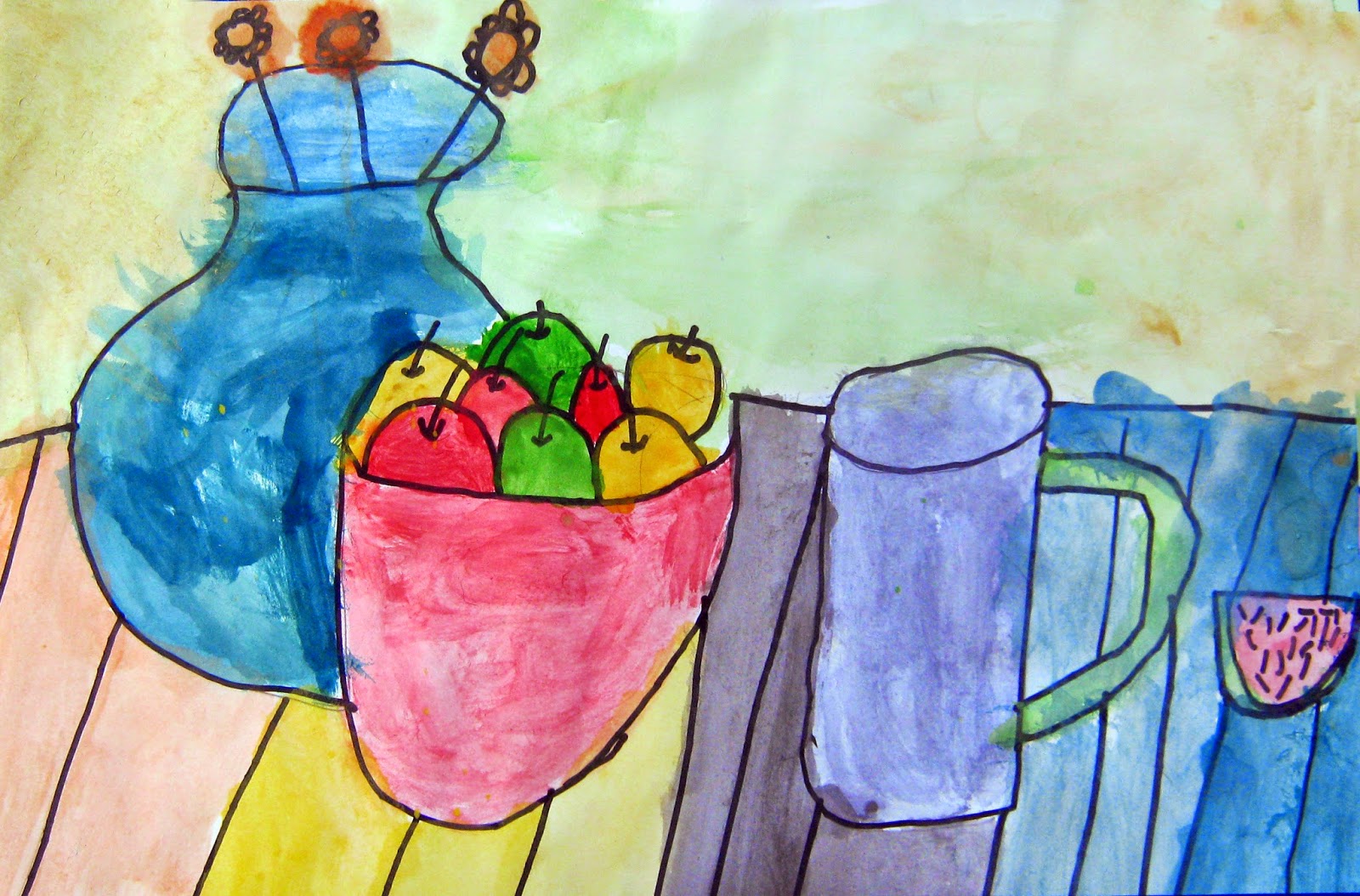Fourth graders created a colorful circle design based on the art of the Mandala. Our designs were created out of the letters of our names. The repetition of colors and shapes around the circle are all created out of letters and the spaces between the lettering.
The word, "Mandala," is from the classical Indian language of Sanskrit. Loosely translated, it means "circle." It represents wholeness and appears in all aspects of life: the celestial circles we call the earth, sun and moon, as well as the conceptual circles of friends, family and community.
In ancient Tibet, as part of a spiritual practice, intricate mandalas were created out of colored sand and crushed stones. The designs in a mandala repeat as they rotate around the circle and any symbols used in the design must be perfectly reproduced each time within the circle.
Rowan J. in one of our fourth grade classes recognized one of the symbols used in this mandala. He said it is the symbol "ar" that is used for Tibetan meditation. How wonderful that we can learn about so many different cultures right in our own classroom. Thank you Rowan!
The American Navajo also created sand paintings used in spiritual rituals, much the same way as they are used by the Tibetans. These designs could range in size from 3-15 feet but only last about a week, depending on the weather and wind conditions.
To create our mandalas, we started with a shape that looks like a slice of pie. It is 1/6th of the full circle. In this shape, we drew the letters of our name either in bubble letters or with straight lines. Then we used a light box in my room to trace our single name design into the full circle, repeating the letters as they rotate around the circle. Just as we did with our last project, we also used a mirror image repetition to make it reflect and add symmetry to the design.
Here are some examples of our name mandalas. Can you find the names hidden in these designs? Some of the students shortened their names or used a nickname for their design. To see all of our mandalas, click on this link for Artsonia and scroll down to the fourth grade exhibit.
http://www.artsonia.com/schools/school.asp?id=114839
 |
| Artwork by Nehemiah (Neo) |
 |
| Artwork by Ava |
 |
| Artwork by Charlie (Chuck) |
 |
| Artwork by Colette (CeCe) |



















.JPG)
.JPG)


.JPG)



